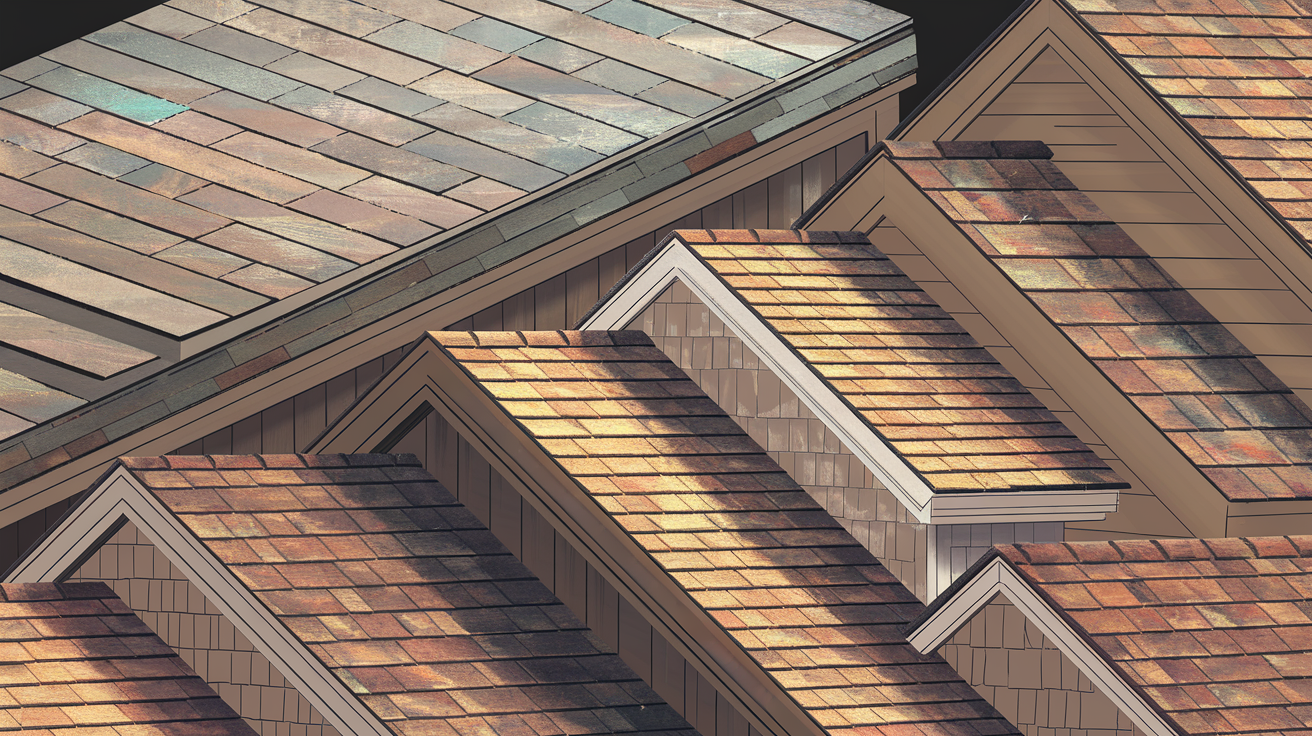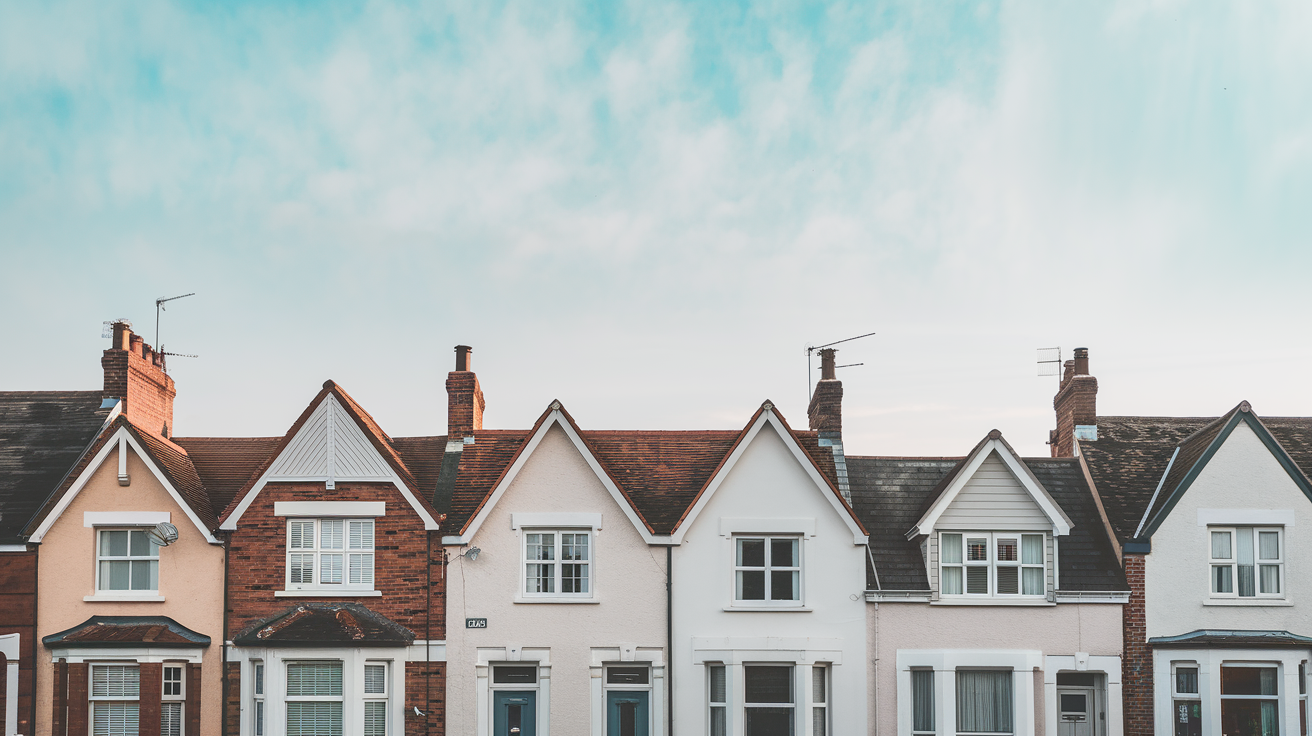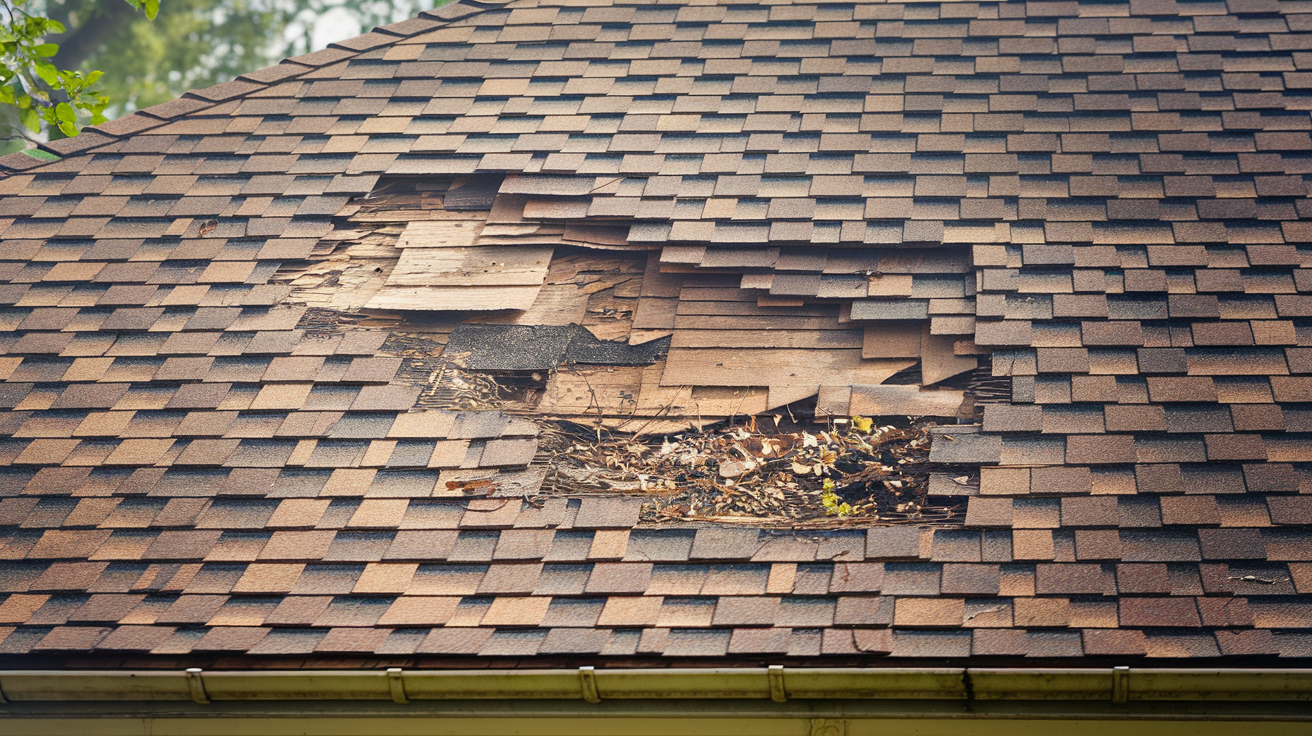Ultimate Guide: How Roof Pitch Affects Water Drainage & Leak Prevention
Is your home vulnerable to water damage due to improper roof drainage? Every year, thousands of homeowners face costly repairs from leaks and structural damage caused by inadequate roof pitch. Your roof's pitch - its angle or steepness - is crucial for protecting your home from water damage and maintaining its structural integrity.
Understanding roof pitch isn't just about architecture - it's about protecting your investment. A properly pitched roof efficiently channels water away from your home, preventing costly issues like mold growth, rotting wood, and foundation damage. Whether you're building a new home, planning a renovation, or simply wanting to better maintain your current roof, knowing how pitch affects water runoff is essential for making informed decisions.
In this comprehensive guide, you'll discover how roof pitch impacts water drainage, learn to identify potential leak risks, and understand which pitch works best for your climate. We'll explore everything from basic measurements to advanced drainage solutions, helping you protect your home for years to come.
- Understanding Roof Pitch
- Impact of Roof Pitch on Water Runoff
- Roof Pitch and Potential for Leaks
- Choosing the Right Roof Pitch for Your Home
- Cost Implications of Different Roof Pitches
Understanding Roof Pitch
Roof pitch is a critical aspect of roof design, influencing both aesthetics and functionality, particularly in water runoff management. It determines the roof's steepness or angle, typically expressed as a ratio of vertical rise to horizontal span. This ratio, often displayed as x:12, means the roof rises x inches (or feet) for every 12 inches (or feet) horizontally. Sometimes, it's represented as a percentage, such as a 1% slope indicating the roof rises 1/8" for every foot of horizontal distance. Roof pitch significantly impacts how quickly water and snow can run off, with steeper pitches facilitating faster runoff and reducing leak potential.

Definition and Importance of Roof Pitch
Roof pitch, defined as the steepness or slope of your roof, is a ratio of vertical rise to horizontal run. A steeper pitch is essential for efficient water runoff, preventing leaks and structural damage. This design allows water and debris to flow off quickly, minimizing risks like pooling water, mold, and leaks. In snowy regions, steeper pitches help shed snow more easily, reducing the weight burden on the roof. For more insights on roof maintenance, visit our comprehensive roof maintenance guide.
Pros of Steeper Roof Pitch
- Efficient water runoff
- Reduced risk of leaks
- Handles snow load better
Cons of Steeper Roof Pitch
- Higher installation costs
- More complex maintenance
How Roof Pitch is Measured
Measuring roof pitch involves determining the rise, run, and slope. The rise is the vertical height, while the run is the horizontal distance. Conceptualize this as a right triangle: the rise is the vertical leg, the run is the horizontal leg, and the roof forms the hypotenuse. The slope, or pitch, is the ratio of rise to run, often expressed as a ratio like 4:12. Accurate measurement ensures compliance with building codes and optimal roof performance. A professional roof assessment can verify if your roof pitch meets necessary standards for effective water runoff. Get Your Roof Assessment.
Steps to Measure Roof Pitch
- Measure the vertical rise over a 12-inch horizontal run.
- Calculate the ratio of rise to run.
- Ensure measurements comply with building codes.
Common Roof Pitch Types with Examples
Roof pitches vary from flat (0:12) to steep (greater than 9:12). Most residential roofs fall between 4:12 and 9:12. Steeper pitches are prevalent in snowy areas to facilitate snow shedding. For instance, a 6:12 pitch is common in homes, offering a balance between effective runoff and maintenance ease. Commercial structures might opt for lower pitches, like 2:12, necessitating efficient drainage to mitigate ponding risks. Selecting the right roof pitch depends on environmental factors and building design, emphasizing the need for adequate gutter systems to handle runoff efficiently.

Impact of Roof Pitch on Water Runoff
This section delves into how roof pitch influences water drainage, underscoring the advantages of steeper pitches and the challenges posed by low-pitch roofs. Understanding these dynamics is crucial for selecting a roof that suits your climate and minimizes potential water damage.
Relationship Between Roof Pitch and Water Flow
Roof pitch plays a pivotal role in effective water drainage, typically expressed as a rise-over-run ratio. A 4:12 pitch, for example, allows water to flow off efficiently due to gravity, much like a steep slide. Conversely, low-pitched roofs retain water, increasing the risk of pooling and leaks. Building codes often specify a minimum slope for runoff, typically around 1% (1/8" per foot), to ensure adequate drainage. For a more detailed analysis, consider our AI-powered roof analysis service.
Benefits of Steeper Roof Pitches for Water Runoff
Steeper roof pitches provide several advantages in water drainage by promoting rapid water flow, which minimizes water penetration. This swift runoff reduces the likelihood of damage, mold, and leaks commonly associated with low-pitched roofs. Steep roofs are particularly beneficial in rainy climates, requiring less maintenance and resisting water damage effectively. To handle the accelerated flow, they necessitate appropriately sized gutters and frequent draining.
Challenges with Low-Pitch Roofs
Despite their modern appeal, low-pitch roofs face significant water runoff challenges. Slow drainage can lead to pooling, which damages roofing materials and the structure itself. Homeowners with low-pitch roofs must ensure efficient drainage systems and regular maintenance to mitigate these risks. Factors like internal drains or scuppers can aid in managing water flow and preventing leaks.

Roof Pitch and Potential for Leaks
Understanding roof pitch is essential for homeowners, as it directly affects water runoff and leak potential. While a steeper pitch aids in efficient water flow, improper installation or inadequate drainage can lead to issues like ponding. The ideal pitch should consider your climate and roofing material, and a professional roof assessment can help determine the best pitch for your needs.
How Roof Pitch Affects Leak Potential
The pitch of a roof significantly influences its leak prevention capabilities. Steep roofs, typically with a slope greater than 9/12, allow fast water runoff, minimizing water buildup and reducing leak risks. However, they require wider gutters to handle increased water volume. On the other hand, low-slope roofs, common in commercial buildings, may experience pooling due to slower runoff, elevating the risk of leaks.
The Role of Water Runoff
Efficient water runoff is vital for leak prevention. Steep roofs allow quick rainwater escape, reducing pooling, leaks, and mold formation. In areas with heavy precipitation, a steep pitch is beneficial for reducing roof load and preventing water seepage.
Common Leak Points on Different Pitches
Different roof pitches have distinct leak points. Steep roofs often leak around flashing, chimneys, and skylights due to poor sealing, while low-slope roofs are vulnerable at seams and pooled water areas. Proper installation and maintenance are crucial for preventing leaks.
Impact of Roofing Materials
Roofing materials play a critical role in leak prevention. Asphalt shingles and metal roofing are popular for steep roofs due to their durability and water-shedding capabilities. In contrast, low-slope roofs often use membrane roofing, which requires meticulous installation to prevent leaks.
Preventative Measures to Reduce Leak Risk
Preventative measures are essential for minimizing leaks. Regular inspections and proper installation can identify potential problems early. For steep roofs, cleaning gutters and checking flashing are vital, while low-slope roofs need clear drainage systems and well-sealed seams.
Importance of Professional Inspection
Professional roof inspections can identify issues before they lead to significant damage. Experts assess roofing materials, check for wear, and ensure proper drainage, extending the roof's lifespan. Annual inspections or checks after major weather events are recommended.
Choosing the Right Roof Pitch for Your Home
Selecting the appropriate roof pitch is a crucial decision impacting aesthetics, functionality, and longevity. The pitch influences architectural style and the roof's ability to shed water and withstand environmental conditions. Consider getting a professional roof assessment to determine the ideal pitch for your specific needs.
Factors to Consider When Selecting Roof Pitch
Several factors influence roof pitch selection, including architectural style, functionality, and local building codes.
Architectural Style
Architectural style plays a significant role, with traditional styles often featuring steeper pitches and modern homes favoring flatter designs.
Functionality
Functionality is crucial, as steeper pitches shed water more effectively, reducing leak risks. Flatter roofs may allow water to pool but offer easier maintenance access.
Local Building Codes
Local building codes often dictate acceptable roof pitches to ensure aesthetic harmony within communities and may specify minimum and maximum pitches.
Climate Considerations and Roof Pitch
Climate significantly impacts ideal roof pitch choices.
Heavy Rainfall or Snow
In regions with heavy rainfall or snow, steeper pitches are advantageous for efficient runoff, minimizing leak and structural damage risks.
Less Precipitation
In areas with less precipitation, low-slope roofs can be cost-effective and functional, requiring fewer materials and offering easier maintenance access.
Insulation Efficiency
Steeper roofs can enhance insulation in colder climates by creating larger attic spaces that trap air, improving insulation efficiency.
Regional Examples of Ideal Roof Pitches
Roof pitch preferences vary by region.
Northern United States
In the snowy northern United States, pitches of 9/12 or greater are common to handle heavy snow loads.
Southwestern United States
The arid southwestern United States often features low-slope or flat roofs, which are cost-effective and suitable for solar panels.
Minimum Slope for Runoff
A minimum slope of 1% is generally required for water runoff, with building codes often mandating a 2% minimum for flat roofs.
Cost Implications of Different Roof Pitches
Roof pitch significantly influences roofing costs, both initially and long-term. Understanding these implications is crucial for effective budget planning and maximizing savings.
Material and Installation Costs
Initial costs are heavily influenced by roof pitch. Low-slope roofs are typically more cost-effective due to fewer materials and reduced installation risks. Steep-slope roofs require additional safety measures and more complex installation techniques, increasing costs.
Low-Slope Roofs
- Lower material costs
- Simple installation
Steep-Slope Roofs
- Higher material costs
- Complex installation
Long-term Maintenance Costs
Long-term maintenance costs vary with roof pitch. Steep roofs allow quick runoff, reducing water pooling risks, but accessing them for maintenance can be costly. Low-slope roofs may require more frequent inspections to prevent leaks.
Energy Efficiency Considerations
Energy efficiency is a key cost factor related to roof pitch. Steep roofs excel in snowy regions, while low-slope roofs often utilize reflective materials to reduce cooling costs. For more on roof maintenance and energy efficiency, explore our comprehensive guide.
In conclusion, while low-slope roofs may have lower initial installation costs, the long-term savings from reduced maintenance and increased energy efficiency can make steep-slope roofs a worthwhile investment. Carefully weighing these factors empowers homeowners to make informed decisions balancing upfront costs with future savings.
Disclaimer: This blog post is intended for informational purposes only and should not be considered professional roofing advice. Always consult with qualified roofing contractors and insurance professionals for specific guidance regarding your individual circumstances.
